

Osiris.pdf (application/pdf Object) Bible History Online Images and Resources for Biblical History. Syncretism. Syncretism /ˈsɪŋkrətɪzəm/ is the combining of different, often seemingly contradictory beliefs, while melding practices of various schools of thought.

Syncretism involves the merger and analogizing of several originally discrete traditions, especially in the theology and mythology of religion, thus asserting an underlying unity and allowing for an inclusive approach to other faiths. Syncretism also occurs commonly in expressions of arts and culture (known as eclecticism) as well as politics (syncretic politics).
Nomenclature, orthography, and etymology[edit] The Oxford English Dictionary first attests the word syncretism in English in 1618. It derives from modern Latin syncretismus, drawing on Greek συγκρητισμός (synkretismos), meaning "Cretan federation". The Greek word occurs in Plutarch's (1st century AD) essay on "Fraternal Love" in his Moralia (2.490b). Social and political roles[edit] Religious syncretism[edit] Ancient Greece[edit] Judaism[edit] Roman world[edit] The Serpent and the Real Origins of Freemasonry. By Philip Gardiner | bestsyndication.com Abraham the Israelite father of mankind, and Hiram of the Freemasons, are one and the same, and both are based upon serpent worshippers with Indian Naga or serpent deity backgrounds.
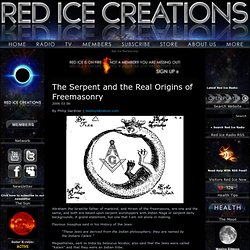
A grand statement, but one that I am not alone in making. Westward. We ask :- 1) Did peoples, cultures, languages and ideas migrate predominantly westward around the world in prehistoric and historic times?

2) Is there a probable physical cause for such a westward movement? 3) Given that the cause could be a natural one, and that humans might have existed as civilized beings for much longer than the academics think, is our real social history richer and more complex than the text books say? 4) Can we find reasons for losses ref-01 of history, technology and advanced knowledge? Finger_counting_romana_computatio.gif (GIF Image, 252x378 pixels) Caduceus. Modern depiction of the caduceus as the symbol of commerce Hermes Ingenui[1] carrying a winged kerykeion upright in his left hand, Roman copy reflecting an unknown Greek original of the 5th century BCE.

(Museo Pio-Clementino, Rome). Wadjet. Dictionary - Definition of clipart.asp?q=Zodiac&w=c. Semiramis. Semiramis depicted as an armed Amazon in this eighteenth-century Italian illustration.
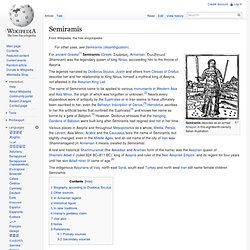
Google Image Result for. Google Image Result for. Google Image Result for. Google Image Result for. PAGANISM The Mother of All Religions - Paganism in Africa. Keep in mind that all the African symbols and rituals (of its Mystery System) described in the following paragraphs preceded Ethiopian/Chaldean/Babylonian Albigensianism by over 100 years, Hinduism by over 1000 years, Judaism by over 3,000 years, Zoroastrianism and Buddhism by over 3,500 years, Christianity by over 4425 years and Islam by nearly 5000 years.
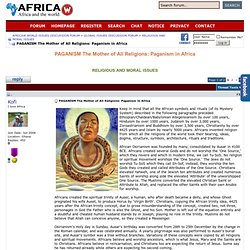
Africans invented religion from which all the religions of the world took their bearing, ideas, dogma, structure, symbols, architecture, rituals and traditions. African Osirianism was founded by many, consolidated by Ausar in 4100 BCE. Africans created several Gods and do not worship the 'One Source,' which they revere and which in modern time, we call Tu-SoS. No religion or spiritual movement worships the 'One Source.'
Google Image Result for. Elemnt2b.gif (GIF Image, 1277x1773 pixels) - Scaled (44%) Ancient Egyptian Gods, Osiris, Isis, Hathor, Horus, Ra, Amun, Anubis, Nut, Ptah - Photos of Egypt - Images of Ancient Egypt - Pictures of Egypt - Photos of Ancient Egypt - Karnak, Pyramids, Tutankhamun, Abu Simbel, Aswan, The Nile, Edfu, Kom Ombo, Felucca. Four Highly Recommended Telescope, Accessory and Astro Imaging suppliers in the UK These are suppliers I have used and their Helpfulness and Customer Service have been second-to-none.
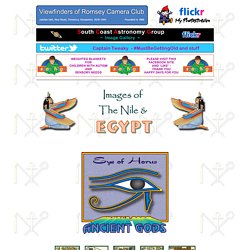
Uraeus - the cobra. The Uraeus is a symbol for the goddess Wadjet, who was one of the earliest Egyptian deities and who often was depicted as a cobra.
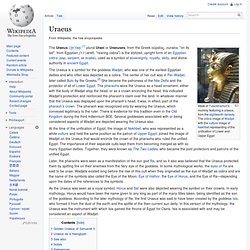
The center of her cult was in Per-Wadjet, later called Buto by the Greeks.[2] She became the patroness of the Nile Delta and the protector of all of Lower Egypt. The pharaohs wore the Uraeus as a head ornament: either with the body of Wadjet atop the head, or as a crown encircling the head; this indicated Wadjet's protection and reinforced the pharaoh's claim over the land.
In whatever manner that the Uraeus was displayed upon the pharaoh's head, it was, in effect, part of the pharaoh's crown. The pharaoh was recognized only by wearing the Uraeus, which conveyed legitimacy to the ruler. There is evidence for this tradition even in the Old Kingdom during the third millennium BCE.
Isis. Temple of Isis in Philae, Egypt Isis (Ancient Greek: Ἶσις, original Egyptian pronunciation more likely "Aset" or "Iset") is a goddess in Ancient Egyptian religious beliefs, whose worship spread throughout the Greco-Roman world.

She was worshipped as the ideal mother and wife as well as the patroness of nature and magic. She was the friend of slaves, sinners, artisans and the downtrodden, but she also listened to the prayers of the wealthy, maidens, aristocrats and rulers.[1] Isis is often depicted as the mother of Horus, the hawk-headed god of war and protection (although in some traditions Horus's mother was Hathor). Isis is also known as protector of the dead and goddess of children. This myth became very important during the Greco-Roman period. Set or Seth sister/brother to Isis ? ;-/ Set /sɛt/ or Seth (/sɛθ/; also spelled Setesh, Sutekh,[1] Setekh, or Suty) is a god of the desert, storms, disorder, violence and foreigners in ancient Egyptian religion.[2] In Ancient Greek, the god's name is given as Sēth (Σήθ).
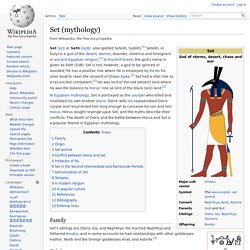
Set is not, however, a god to be ignored or avoided; he has a positive role where he is employed by Ra on his solar boat to repel the serpent of Chaos Apep.[2] Set had a vital role as a reconciled combatant.[2] He was lord of the red (desert) land where he was the balance to Horus' role as lord of the black (soil) land.[2] In Egyptian mythology, Set is portrayed as the usurper who killed and mutilated his own brother Osiris. Osiris' wife Isis reassembled Osiris' corpse and resurrected him long enough to conceive his son and heir Horus. Horus sought revenge upon Set, and the myths describe their conflicts. Nephthys - Wikipedia, Sister to Isis. Etymology[edit] Hathor - cow goddess"Mistress of the West" Hathor (/ˈhæθɔr/ or /ˈhæθər/;[2] Egyptian: ḥwt-ḥr and from Greek: Άθωρ, "mansion of Horus")[1] is an Ancient Egyptian goddess who personified the principles of joy, feminine love, and motherhood.[3] She was one of the most important and popular deities throughout the history of Ancient Egypt.
Hathor was worshiped by Royalty and common people alike in whose tombs she is depicted as "Mistress of the West" welcoming the dead into the next life.[4] In other roles she was a goddess of music, dance, foreign lands and fertility who helped women in childbirth,[4] as well as the patron goddess of miners.[5] The cult of Hathor predates the historic period, and the roots of devotion to her are therefore difficult to trace, though it may be a development of predynastic cults which venerated fertility, and nature in general, represented by cows.[6] Hathor is commonly depicted as a cow goddess with horns in which is set a sun disk with Uraeus.
Early depictions[edit] Temples[edit] Horus - the Falcon Son of Isis. Horus is one of the oldest and most significant deities in ancient Egyptian religion, who was worshipped from at least the late Predynastic period through to Greco-Roman times. Different forms of Horus are recorded in history and these are treated as distinct gods by Egypt specialists.[1] These various forms may possibly be different perceptions of the same multi-layered deity in which certain attributes or syncretic relationships are emphasized, not necessarily in opposition but complementary to one another, consistent with how the Ancient Egyptians viewed the multiple facets of reality.[2] He was most often depicted as a falcon, most likely a lanner or peregrine, or as a man with a falcon head.[3] Etymology[edit] Horus was also known as Nekheny, meaning "falcon". Some have proposed that Nekheny may have been another falcon-god, worshipped at Nekhen (city of the hawk), with which Horus was identified from early on.
Osiris - Brother and Husband of Isis. Osiris (/oʊˈsaɪərɨs/; also Usiris), is an Egyptian god, usually identified as the god of the afterlife, the underworld and the dead. He was classically depicted as a green-skinned man with a pharaoh's beard, partially mummy-wrapped at the legs, wearing a distinctive crown with two large ostrich feathers at either side, and holding a symbolic crook and flail.
Osiris is first attested in the middle of the Fifth dynasty of Egypt, although it is likely that he was worshipped much earlier;[4] the term Khenti-Amentiu dates to at least the first dynasty, also as a pharaonic title. Most information available on the myths of Osiris is derived from allusions contained in the Pyramid Texts at the end of the Fifth Dynasty, later New Kingdom source documents such as the Shabaka Stone and the Contending of Horus and Seth, and much later, in narrative style from the writings of Greek authors including Plutarch[5] and Diodorus Siculus.[6] Etymology of the name[edit] Appearance[edit] Early mythology[edit]
Geb - Father of Isis ( Earth ) Name[edit] Evohé, Isis! [This Hymn to Isis recognizes her as the central Spiritual Being of Reverence in the Gnostic Pagan Tradition. "Evohé" (pronounced eh-voh-ay) is synonymous with "Ave," as in "Ave, Maria. " Nut (goddess) - mother of Isis. Goddess nut sky goddess. Nut ( Goddess as a Bull.